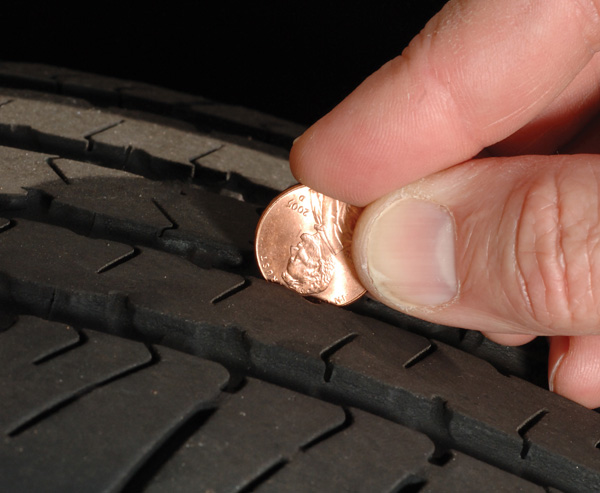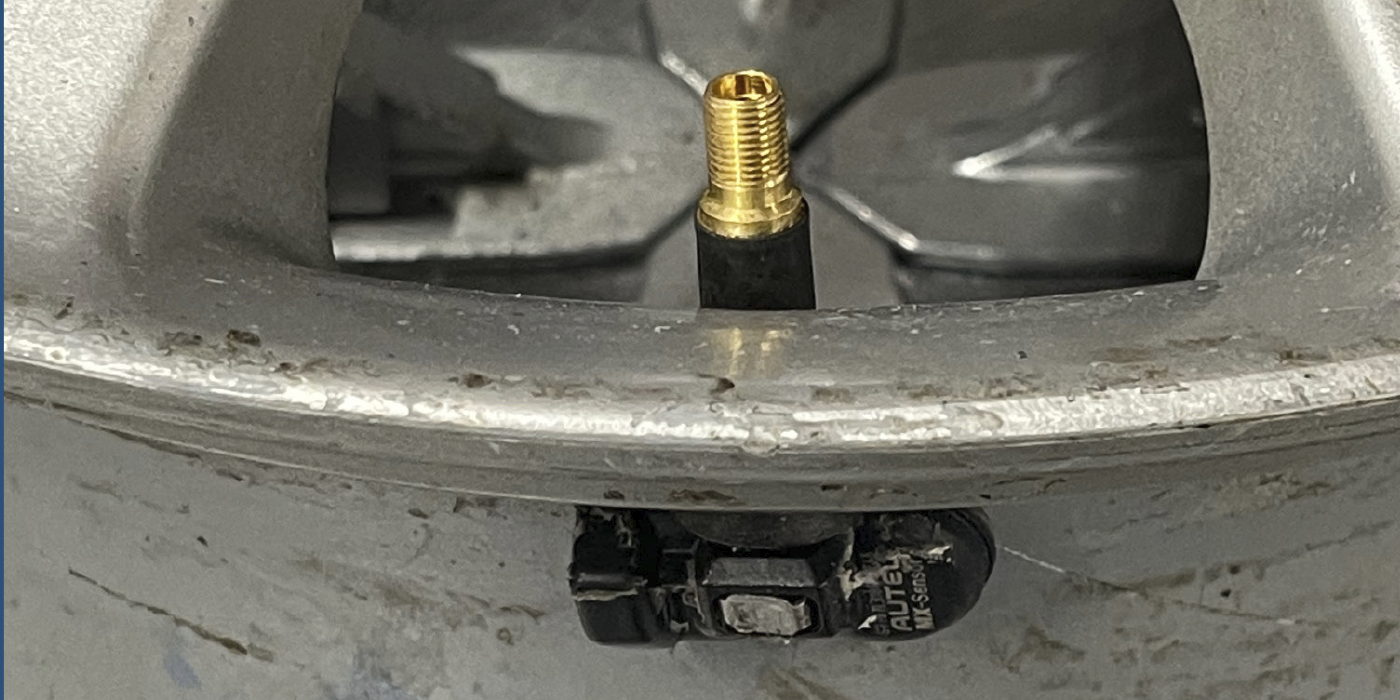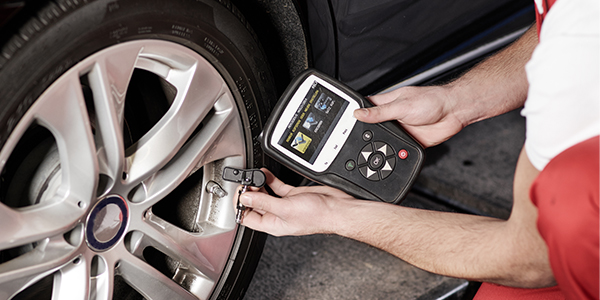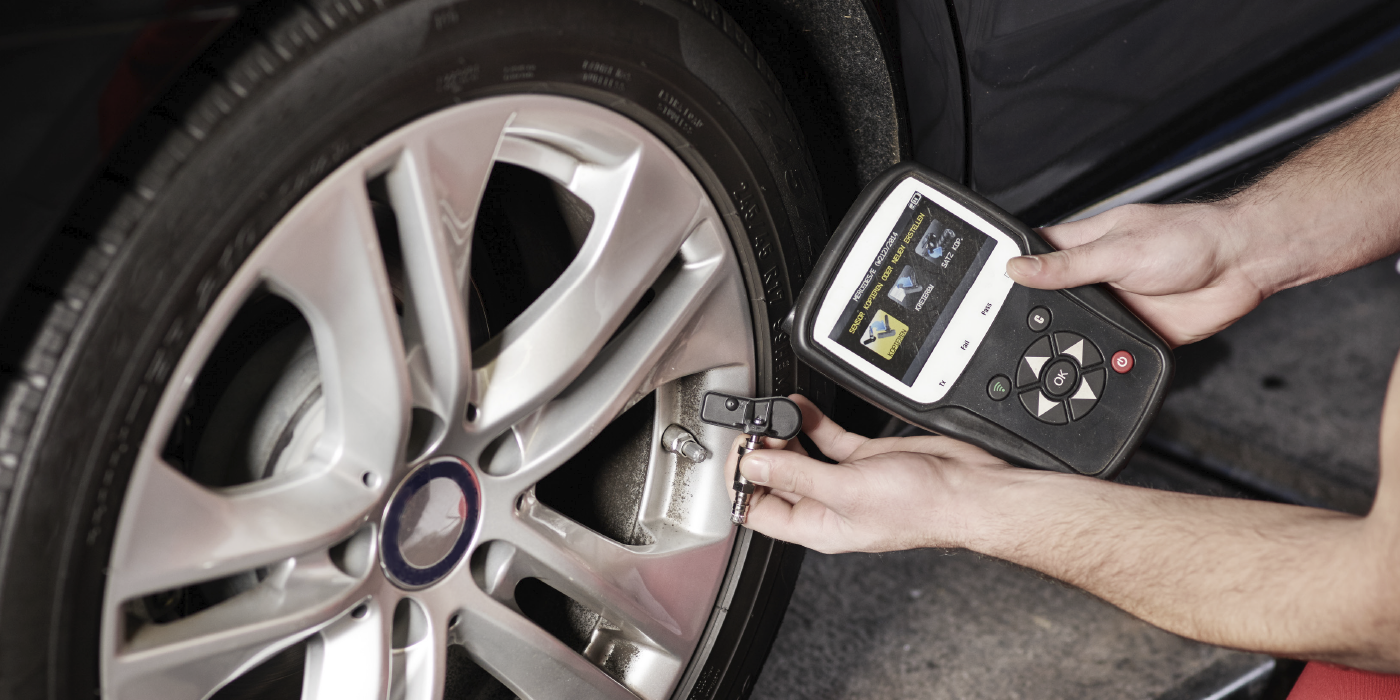
A head-to-head challenge in the tire industry currently involves two of the nation’s greatest presidents. The debate is over a mere 2/32nds of an inch, but safety is held as most important on both sides of the coin. Like the fate of the nation they led, it all rests on their heads.
For decades, a quick test for tire treadwear has consisted of placing a penny on edge in a tire’s grooves. If the top of Abe Lincoln’s head remains visible, the tread is less than 2/32nds of an inch, meaning it was time for new tires. In fact, tread depth below 2/32nds makes those tires “illegal” in some states. Even without a state law, most all industry players acknowledge the danger of riding on the worn-out tires.
It could be chalked up to inflation, but one of America’s leading high-performance tire and wheel distributors believes the penny needs to be replaced with a quarter. Tire Rack officials are promoting using the quarter’s inverted George Washington to show that less than 4/32nds remain if the top of his powdered hair touches the tread.
Doubling the amount of remaining tread as a signal to replace tires makes a big difference in the distance required to stop a vehicle on a rain-slicked roadway, according to Woody Rogers, Tire Rack’s tire product information specialist.
Tests conducted by Tire Rack provide compelling results that favor the switch.
Using brand new tires with 10/32nds tread, worn tires at 4/32nds and legally worn-out tires at 2/32nds, the test consisted of 70 mph runs with a passenger car and pickup truck. Each run ended with a panic stop on asphalt covered by 0.05 inches of water, equivalent to a moderate rain shower.
With new tires, the car traveled 195 feet before coming to a stop; with worn tires (4/32nds), it went 290 feet. The same vehicle with worn-out 2/32nds tires traveled 379 feet, nearly doubling the stopping distance of the new-tire-equipped car. The eye-opener, says Rogers, was discovering that the sedan with 2/32nds tread was still going 44 mph when it reached the final stopping point of the 4/32nds-equipped vehicle.
The pickup truck test provided longer stopping distances, but similar ratios. The pickup with worn-out tires was still going 47 mph when it passed the stopping point of the 4/32nds-equipped truck. A video of the tests is available at tirerack.com by searching “panic stopping.”
Based on the tests, Tire Rack began recommending that drivers consider replacing their tires at 4/32nds tread. Rogers said customers may contend the company desires to drum up extra business, but viewing the tread depth video and determining if drivers will face wet driving conditions usually wins their confidence.
Consumer Push-Back
Rogers acknowledges that customers who replace tires at 4/32nds may not get the full benefit of a tread warranty or know if their tires are wearing out too fast, but tire wear is not linear.
“The first 32nd of treadwear may occur within the initial 1,500 miles of a new tire’s life, while its final 32nd could take 4,000 miles,” he says.
To determine the proper balance of the cost of new tires vs. performance, a consumer can compare the price of a new set of tires to their insurance deductible. Rogers points out that the deductible is likely higher than the cost of a set of new tires.
He adds that tire performance comes from its tread depth, compounds and pattern. Take away any of them and traction is sacrificed.
“Treadwear robs two of the components,” he says, “and at some point, the tires won’t meet a driver’s needs and expectations under certain conditions.”
Rogers is encouraged when customers embrace the concept that desired performance characteristics should dictate when to replace a vehicle’s tires.
“I’ve seen an owner of a 15-year-old Saturn with all-season tires recognize a loss of traction on a highway and invest in new tires before the old ones reached the 2/32nds wear bar.”
The penny and quarter tests add up to new opportunities for tire technicians to educate customers. Asking about their driving habits and anticipated weather and road conditions helps discover what drivers think they need, so recommendations and decisions can be made.














